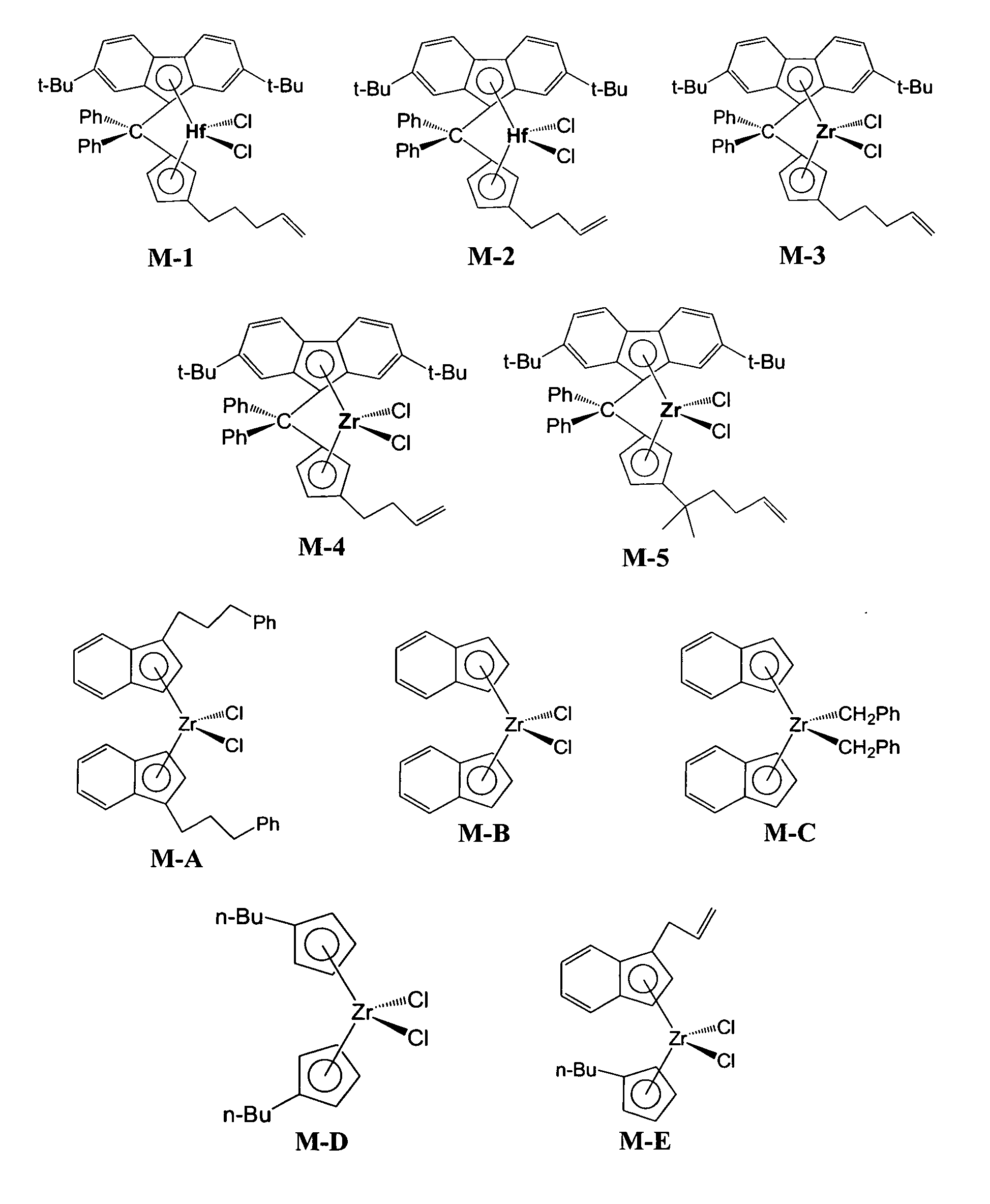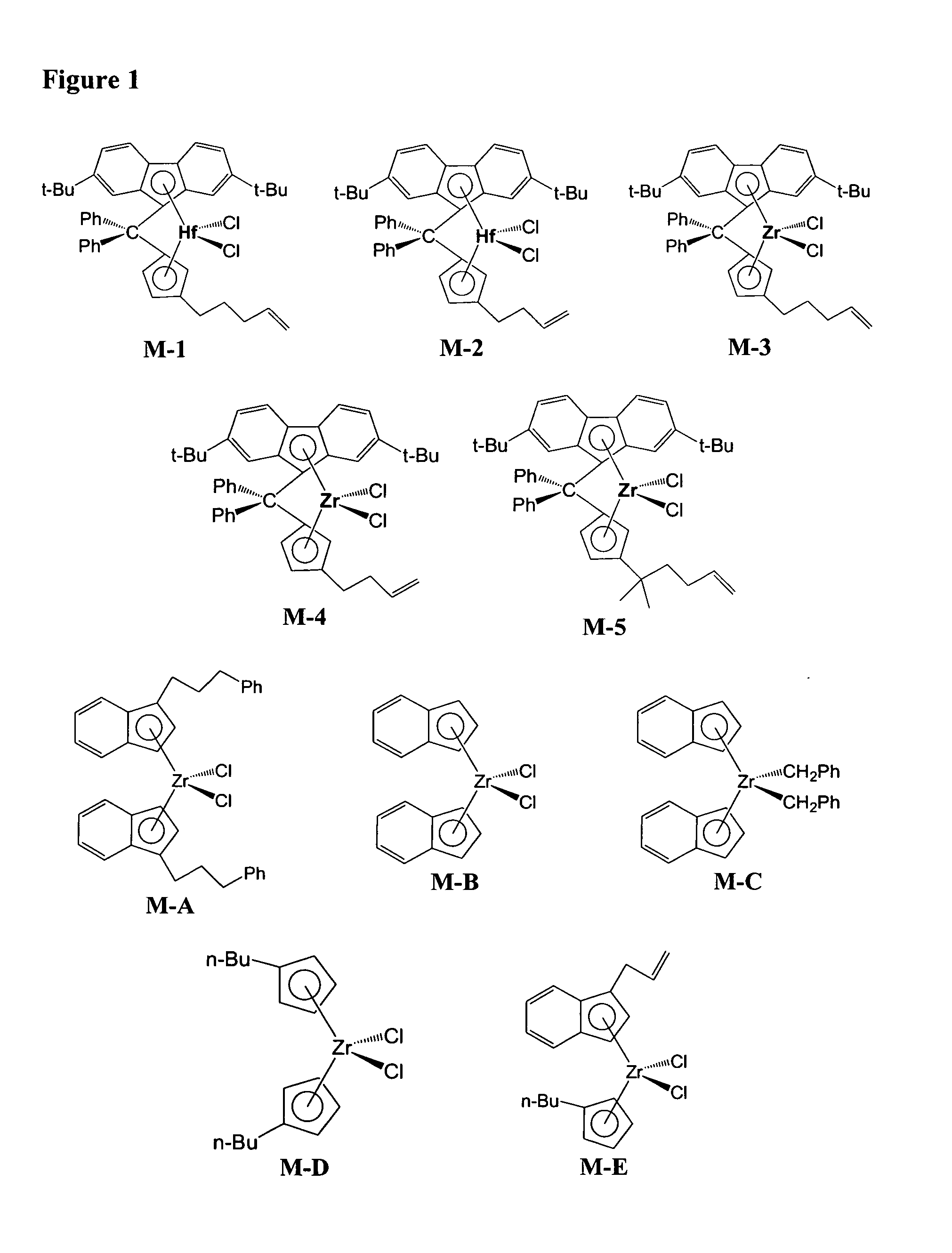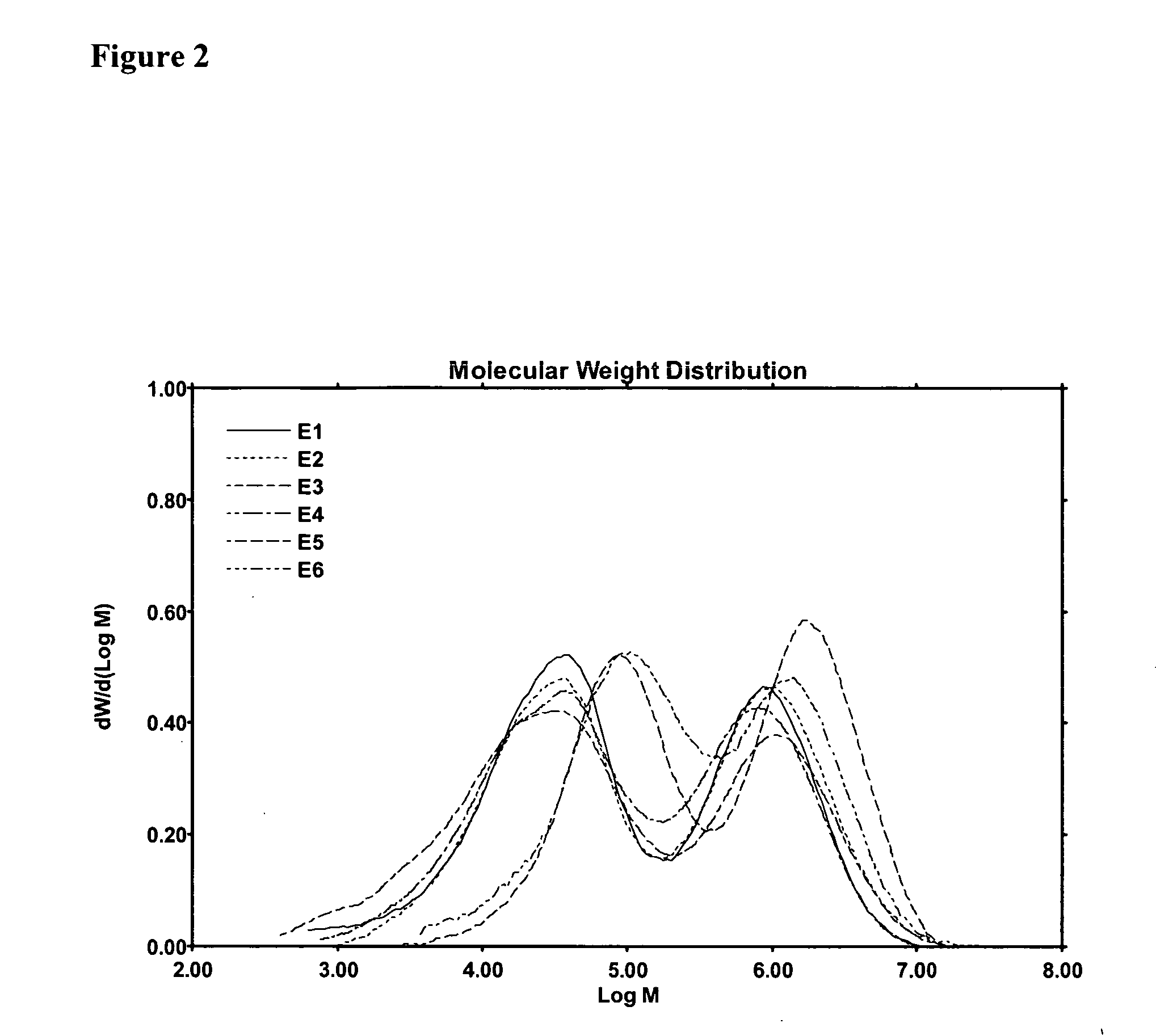Dual metallocene catalysts for polymerization of bimodal polymers
- Summary
- Abstract
- Description
- Claims
- Application Information
AI Technical Summary
Benefits of technology
Problems solved by technology
Method used
Image
Examples
examples 1-6
Bench Scale Catalytic Runs Varying the Metallocene, Activator-Support, and Conditions
[0494] Examples 1-6 in Table 1 illustrate polymerization run data and polymer characterization data for ethylene homopolymer and ethylene-1-hexene copolymer prepared using the catalyst compositions disclosed herein. Polymerization runs were conducted in a one-gallon (3.785 liter) stainless steel reactor. Two liters of isobutane and alkyl aluminum cocatalyst / scavenger were used in all examples. Hydrogen, when added, was added slowly throughout the run and was measured as the pressure drop on a 340 mL steel cylinder. Metallocene solutions (1 mg / mL) were usually prepared by dissolving 30 mg of metallocene in 30 mL of toluene.
[0495] A typical polymerization procedure is as follows: Alkyl aluminum, SSA and the metallocene solution were added in that order through a charge port while venting isobutane vapor. The charge port was closed and two liters of isobutane were added. The contents of the reactor ...
examples 7-13
Pilot-Plant Scale Catalytic Runs Varying the Metallocene, Activator-Support, and Conditions
[0497] Examples 7-13 (E7-E13) in Table 2 illustrate polymerization run data and polymer characterization data for ethylene-1-hexene copolymer prepared using the catalyst compositions disclosed herein. Polymerization runs were conducted as follows. A 27.3-gallon slurry loop reactor was employed as the polymerization reactor. Polymerization runs were carried out under continuous particle form process conditions in the loop reactor (also known as a slurry process) by contacting an isobutane solution of a first metallocene, having the formula indicated in FIG. 1, and a second metallocene, having the formula indicated in FIG. 1, with either triisobutylaluminum or tributylaluminum and a sulfated alumina activator-support in a 0.5 L stirred autoclave with continuous output to the loop reactor.
[0498] Precontacting was carried out in the following manner. Either triisobutylaluminum or tributylalumin...
PUM
| Property | Measurement | Unit |
|---|---|---|
| Time | aaaaa | aaaaa |
| Temperature | aaaaa | aaaaa |
| Temperature | aaaaa | aaaaa |
Abstract
Description
Claims
Application Information
 Login to View More
Login to View More - R&D
- Intellectual Property
- Life Sciences
- Materials
- Tech Scout
- Unparalleled Data Quality
- Higher Quality Content
- 60% Fewer Hallucinations
Browse by: Latest US Patents, China's latest patents, Technical Efficacy Thesaurus, Application Domain, Technology Topic, Popular Technical Reports.
© 2025 PatSnap. All rights reserved.Legal|Privacy policy|Modern Slavery Act Transparency Statement|Sitemap|About US| Contact US: help@patsnap.com



